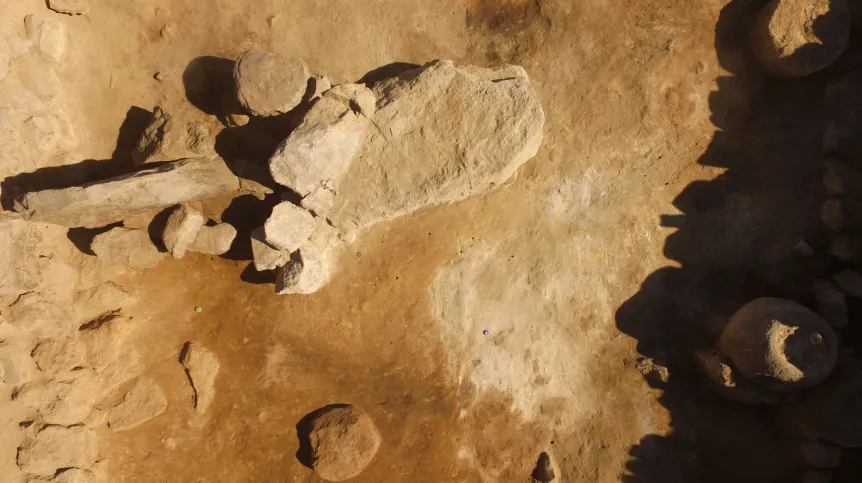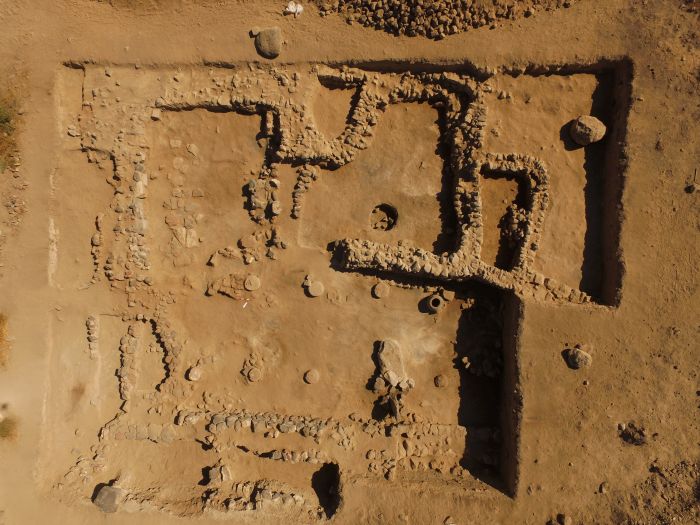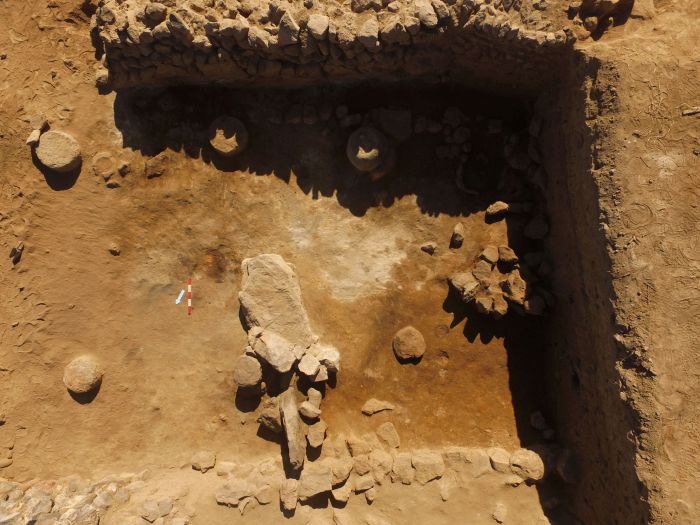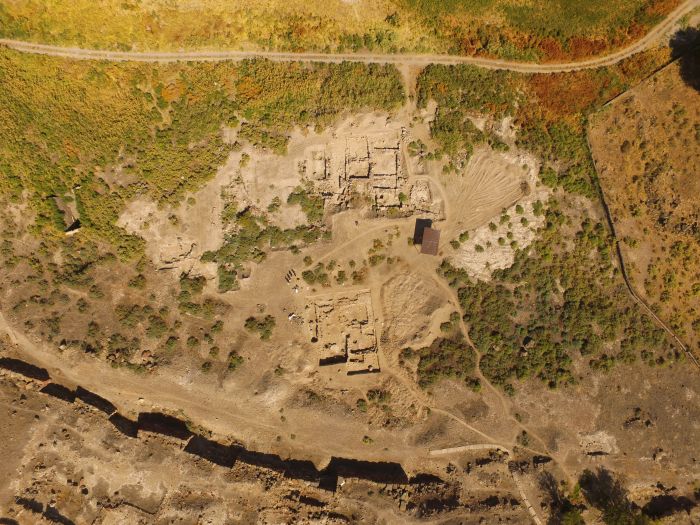
Large amounts of flour residue from 3,000 years ago have been discovered by a Polish-Armenian team of archaeologists working in Metsamor, Armenia. The discovery was made in a large building supported on columns, which collapsed during a fire.
'The flour was preserved in the form of bright spots. At first glance, it looked like lightly burnt ash. With froth flotation, we proved that it was flour, not ash', says the lead researcher, Professor Krzysztof Jakubiak from the Faculty of Archaeology of the University of Warsaw.
The research in Metsamor is a joint project of the Faculty of Archaeology of the University of Warsaw, the Polish Centre of Mediterranean Archaeology UW and the Service for the Protection of Historical Environment and Cultural Museums-Reserves of Armenia. On the Armenian side, the project is headed by Professor Ashot Piliposyan.

Professor Krzysztof Jakubiak admits that currently the flour, or rather its remains, 'is useless'. It was pressed into a layer several dozen centimetres thick. According to the researchers' estimates, up to 3.5 tons of flour were originally stored in this place. According to Jakubiak, only 'several sacks of organic material' have survived to our times.
According to the researcher, this is a rare find, but similar finds are also known from Armenia, for example from the fortified settlement of the Urartu-Teishebaini kingdom (the current name of the archaeological site is Karmir Blur).
The building filled with flour was discovered by a Polish-Armenian team in Metsamor. This is one of the most famous archaeological sites in Armenia, located several dozen kilometres west of Yerevan. A fortified settlement was established there in the 4th millennium BCE.
The structure was large. It consisted of two rows of a total of 18 wooden columns supporting a reed roof with wooden beams. Only the stone bases of the columns and well-preserved burned fragments of beams and roof sheathing have survived to our times. The building functioned between the end of the 11th and the beginning of the 9th century BCE.
'It is one of the oldest known structures of this type from the southern Caucasus and eastern Anatolia. Its remains have been preserved so well only thanks to an ancient fire that put an end to this object', believes Professor Krzysztof Jakubiak.
According to the archaeologist, initially the building had a representative function, and then its interior was changed. It was probably converted for economic purposes, because several furnaces were added. There was flour next to them. Most likely, it was wheat flour used to bake bread. 'Based on the amount of preserved material, we can conclude that the it was mass production', he adds.

According to Professor Krzysztof Jakubiak, archaeologists are probably dealing with a bakery building that burned down. However, he points out that in the area of Transcaucasia there are known practices of using flour for divination purposes, which could change the interpretation of the function of the building.
'Further research and analyses are needed for this. We still have not examined the entire structure. Perhaps further research will provide answers', adds the archaeologist.
In the period when the building existed, Metsamor occupied an area of about 10 hectares. A fortress dominated the town. The burned building was located in the lower town, outside the main network of fortifications.
Archaeologists are not certain who inhabited the settlement at that time, because its inhabitants did not know writing. It is assumed that Metsamor was part of a proto-state tribal group. From the 8th century BCE, Metsamor was part of the Urartu kingdom - the biblical kingdom of Ararat. It was conquered by King Argishti I.

Metsamor is a protected archaeological site with the status of an archaeological reserve. Excavations in its area have been carried out since 1965. During its heyday from the 4th to the 2nd millennium BCE, the settlement occupied over 10 hectares and was surrounded by cyclopean walls. During the early Iron Age, from the 11th to 9th century, Metsamor grew to nearly 100 hectares. The central fortress was surrounded by temple complexes with seven sanctuaries. At that time, it was one of the most important cultural and political centres in the Aras valley. The place was inhabited without interruption until the 17th century.
The last research season took place in September and October 2022. Polish archaeologists have been excavating in Metsamor since 2013 under an agreement with the Institute of Archeology and Ethnography of the National Academy of Sciences of the Republic of Armenia and the Ministry of Education, Science, Culture and Sport of the Republic of Armenia. (PAP)
PAP - Science in Poland, Szymon Zdziebłowski
szz/ zan/ kap/
tr. RL













